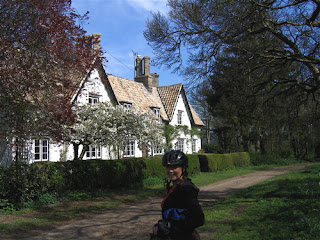
This is my last day here (wahh!) for awhile anyway. I'm flying back to Dancing Leaf Farm tomorrow to get ready for the April studio tour and the Maryland Sheep and Wool Festival. I'll be back for 3 weeks and will cram every minute in with dyeing, printing, skeining, shearing, cleaning, yard work, gardening, biking, hiking, catching up with friends, seeing my boys, animals, sunsets and working by butt off. I am really looking forward to it too.
On the table are most of the felting that I've done here in Cambridge. I also almost finished 2 sweaters (will have to finish next week) a few hats and a sock. See, I haven't been a total slacker!



After I needle felt the balls, I put them in hot water, then remove and roll vigorously into a firm ball.

After drying, they get gussied up with seed beeds. These are the finished pendants.













































